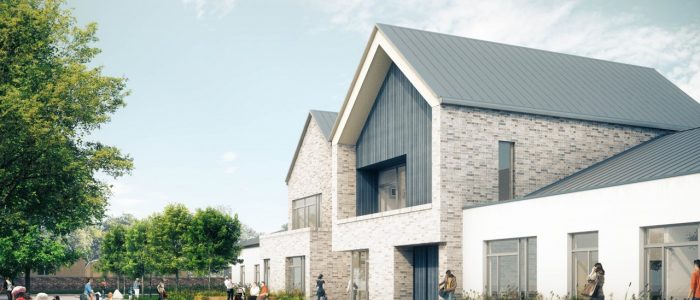Stirling Care Village Designed To Be Dementia Friendly
A glimpse of what the new Stirling Care Village will look like, with its emphasis on being dementia friendly, has been revealed at a recent international masterclass on design for dementia and ageing. The conference, at the Iris Murdoch Building at the University of Stirling, heard how the project architects have taken advantage of sunlight and the landscape to create a general feeling of well-being, and how the clear spatial layout will assist in orientation; social areas will encourage independence and interaction; the interior design will offer opportunities for reminiscence and memorabilia and colour contrast will help way-finding.
The design concept supports Stirling’s ambition to be a dementia friendly city and the village will be built around a series of public spaces and therapeutic courtyard gardens. In addition to ground level gardens, specially designed roof terraces will offer access to outdoor spaces and fresh air from upper floors and footpaths will encourage access to nearby woodland.
Key design features include:-
- Green spaces – a village green, landscaping with new planting and trees, courtyard gardens, roof terraces, and raised planters for gardening. These features will help soften the built environment, create attractive, open and welcoming spaces and provide opportunities to connect with nature.
- Entrance plazas and community amenity spaces to encourage sociability and provide spaces for gathering and activities.
- Interior design and way finding – Single en-suite bedrooms to maintain dignity and privacy which can be adapted to suit individual needs, use of colour, contrast, signage, acoustics and lighting to support way finding. Large scale wall graphics and display cabinets to provide opportunities for reminiscence, memorabilia and personalisation and help create a familiar, warm and comforting environment.
Shiona Strachan, Chief Officer of the Clackmannanshire and Stirling Health and Social Care Partnership, said: “The number of people affected by dementia is set to double in the next 25 years and it is estimated that, at any one time, up to one in four patients occupying a hospital bed will suffer from some form of dementia. It is with these figures in mind that we have worked closely with the architects to make sure that this important new development is designed to be dementia-friendly at every level to help meet the increasing demands of an ageing population and set new standards for dementia friendly design.”
Background
Stirling Care Village will bring a wide range of health and social services together in two new purpose-built facilities – a Care Hub and a Primary and Urgent Care Building. More than 100 beds will be created in the new Care Hub to provide short-term care, assessment or rehabilitation for older people who require additional support following an illness or operation. These services will be provided in a comfortable, homely environment to help older people recover, regain their independence and, in the majority of cases, return to their own homes. The Care Hub will also provide support for people with dementia and those who need palliative or end of life care.
The new Primary and Urgent Care Building will provide more modern, spacious accommodation for a number of existing health services including: Minor Injuries, X-ray facilities and GP out-of-hours services. It will also house a number of local GP practices which will re-locate to purpose-built premises within the new building.
The £35m Care Village development is a joint venture between Stirling Council, NHS Forth Valley, the Scottish Ambulance Service and the Health and Social Care Partnership. Forth Valley College is also keen to explore opportunities to offer local young people, who are considering a career in the health and care sector, a range of training and volunteering opportunities within the new Care Village. Robertson Construction are the main contractors, the architects are jmarchitects and the project is being developed through hub East Central Scotland (a joint partnership between public and private sector organisations aimed at developing and delivering better local services across East Central Scotland). The majority of facilities are expected to be completed by autumn 2018 with the ambulance station and final site works completed by autumn 2019.
In 2016, 90,000 people in Scotland were diagnosed with dementia and more than 4,900 live in the Forth Valley area.



